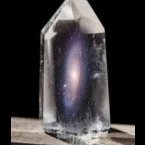-
Posts
3,084 -
Joined
-
Last visited
Reputation Activity
-
 Jaager got a reaction from rshousha in Looking for plans or possible models of Magellan's ships.
Jaager got a reaction from rshousha in Looking for plans or possible models of Magellan's ships.
Jonathan,
The best that you can probably do is a reconstruction.
Seaways did a 2 sheet 4 plan of a Manila galleon of about 1575. It would be a hundred year later off spring but it would carry echos.
If you look carefully, the heavy footprint of Roman merchant bulk carriers can be seen in Medieval seagoing vessels.
We have had several threads going here on this period. Do a search for Louie da fly for a view of what we know.
The series of volumes covering the Red Bay wreck gets close. There is the AOTS volume doing a guess about Columbus' vessels.
Texas AM has some data. Get to know what is in the Subjects built Up to and including 1500 AD forum.
What you seek will not be a simple one off fire and forget. It will involve serious academic immersion in speculative and arcane subjects.
It will involve drafting and lofting. It will involve scratch building - tools and wood. It will be a whole world of its own to do correctly.
You will do the work that would earn you an advanced academic degree in most other fields, but there will be no robes, diploma, or accolades for the effort.
-
 Jaager got a reaction from J11 in Looking for plans or possible models of Magellan's ships.
Jaager got a reaction from J11 in Looking for plans or possible models of Magellan's ships.
Jonathan,
The best that you can probably do is a reconstruction.
Seaways did a 2 sheet 4 plan of a Manila galleon of about 1575. It would be a hundred year later off spring but it would carry echos.
If you look carefully, the heavy footprint of Roman merchant bulk carriers can be seen in Medieval seagoing vessels.
We have had several threads going here on this period. Do a search for Louie da fly for a view of what we know.
The series of volumes covering the Red Bay wreck gets close. There is the AOTS volume doing a guess about Columbus' vessels.
Texas AM has some data. Get to know what is in the Subjects built Up to and including 1500 AD forum.
What you seek will not be a simple one off fire and forget. It will involve serious academic immersion in speculative and arcane subjects.
It will involve drafting and lofting. It will involve scratch building - tools and wood. It will be a whole world of its own to do correctly.
You will do the work that would earn you an advanced academic degree in most other fields, but there will be no robes, diploma, or accolades for the effort.
-
 Jaager got a reaction from mtaylor in Looking for plans or possible models of Magellan's ships.
Jaager got a reaction from mtaylor in Looking for plans or possible models of Magellan's ships.
Jonathan,
The best that you can probably do is a reconstruction.
Seaways did a 2 sheet 4 plan of a Manila galleon of about 1575. It would be a hundred year later off spring but it would carry echos.
If you look carefully, the heavy footprint of Roman merchant bulk carriers can be seen in Medieval seagoing vessels.
We have had several threads going here on this period. Do a search for Louie da fly for a view of what we know.
The series of volumes covering the Red Bay wreck gets close. There is the AOTS volume doing a guess about Columbus' vessels.
Texas AM has some data. Get to know what is in the Subjects built Up to and including 1500 AD forum.
What you seek will not be a simple one off fire and forget. It will involve serious academic immersion in speculative and arcane subjects.
It will involve drafting and lofting. It will involve scratch building - tools and wood. It will be a whole world of its own to do correctly.
You will do the work that would earn you an advanced academic degree in most other fields, but there will be no robes, diploma, or accolades for the effort.
-
 Jaager got a reaction from Zocane in Do I Use Primer?
Jaager got a reaction from Zocane in Do I Use Primer?
It has been year ago, but the sanding sealer that I used was thick and produced a significant layer.
For furniture - especially on open pore wood like Oak or Walnut or non-Birch plywood it is a useful
prep. It could have out of scale effect on a model.
I favor the traditional:
1) super blonde shellac flakes 5% solution in denatured alcohol or 100% isopropyl alcohol *
2) pure Tung oil 1:1 with mineral spirits as a primer.
The first coat is ragged on and wiped off after a few minutes. It soaks into the wood instead of leaving a surface layer.
* Normal super blonde shellac is 10% soln.
The off the shelf garnet shellac is ~20% - the waxes increase its solubility.
-
 Jaager got a reaction from Canute in La Marine De Louis XVI by Patrick Villiers plans only - New ANCRE publication
Jaager got a reaction from Canute in La Marine De Louis XVI by Patrick Villiers plans only - New ANCRE publication
Well, PP completed the transfer of funds, so I made the purchase of the box of plans. Today, I was notified that the box has been shipped. I paid for the
higher level shipping. It should not be too long before I find out if these plans fit my requirements.
-
 Jaager got a reaction from flying_dutchman2 in The Ships of Abel Tasman and 17th Century Dutch Merchant Ships
Jaager got a reaction from flying_dutchman2 in The Ships of Abel Tasman and 17th Century Dutch Merchant Ships
Jarrod,
Do yourself a favor, saving yourself pointless stress and buy a copy of both books. If 17th C. Dutch is a focus, then you will want both anyway.
You are lucky if you can still buy a copy of The Ships of Abel Tasman. The time window is not as long as you imagine it to be.
-
 Jaager got a reaction from mtaylor in Internet Hobbies store
Jaager got a reaction from mtaylor in Internet Hobbies store
Since GOOGLE search brings them up as a spam ad superimposition on the page., and they are either a full blown scam or have crashed - with a full mailbox and no live contact, perhaps a rough wave washed the whole crew out to sea - GOOGLE should be notified that they are enabling a criminal enterprise. The way GOOGLE handles it will indicate whether GOOGLE too is a scam at base or legit.
-
 Jaager got a reaction from Canute in Internet Hobbies store
Jaager got a reaction from Canute in Internet Hobbies store
Since GOOGLE search brings them up as a spam ad superimposition on the page., and they are either a full blown scam or have crashed - with a full mailbox and no live contact, perhaps a rough wave washed the whole crew out to sea - GOOGLE should be notified that they are enabling a criminal enterprise. The way GOOGLE handles it will indicate whether GOOGLE too is a scam at base or legit.
-
 Jaager got a reaction from allanyed in Faring the Frames
Jaager got a reaction from allanyed in Faring the Frames
Allen,
Your kit is POB. What you are faring are generally termed bulkheads. I believe the first POB kits were Italian. Whoever did the first naming and translation of the first kits was obviously not at all academically inclined. The evidence for this is the use of the term bulkhead to begin with. (Unless the first kit was a submarine.) Since only Chinese wooden ships had actual bulkheads, what they actually are; moulds. To rif a bit about POB: Some sort of outboard support between the moulds will make them less prone to movement or displacement while being abraded. The mass market POB kits tend to have an inadequate number of moulds. This makes for problems with dips and hollows in the first layer of planking. But enough about the problems with moulds.
The point I wish to make is that moulds/bulkheads are not frames. Their only resemblance to frames is that they reside where a few of the actual frames of the ship would be.
Misuse of terminology can lead to confusion. Should you progress on into scratch POF hull fabrication, you would understand why moulds should never be confused with actual frames.
-
 Jaager got a reaction from Canute in Faring the Frames
Jaager got a reaction from Canute in Faring the Frames
Allen,
Your kit is POB. What you are faring are generally termed bulkheads. I believe the first POB kits were Italian. Whoever did the first naming and translation of the first kits was obviously not at all academically inclined. The evidence for this is the use of the term bulkhead to begin with. (Unless the first kit was a submarine.) Since only Chinese wooden ships had actual bulkheads, what they actually are; moulds. To rif a bit about POB: Some sort of outboard support between the moulds will make them less prone to movement or displacement while being abraded. The mass market POB kits tend to have an inadequate number of moulds. This makes for problems with dips and hollows in the first layer of planking. But enough about the problems with moulds.
The point I wish to make is that moulds/bulkheads are not frames. Their only resemblance to frames is that they reside where a few of the actual frames of the ship would be.
Misuse of terminology can lead to confusion. Should you progress on into scratch POF hull fabrication, you would understand why moulds should never be confused with actual frames.
-
 Jaager got a reaction from mtaylor in Faring the Frames
Jaager got a reaction from mtaylor in Faring the Frames
Allen,
Your kit is POB. What you are faring are generally termed bulkheads. I believe the first POB kits were Italian. Whoever did the first naming and translation of the first kits was obviously not at all academically inclined. The evidence for this is the use of the term bulkhead to begin with. (Unless the first kit was a submarine.) Since only Chinese wooden ships had actual bulkheads, what they actually are; moulds. To rif a bit about POB: Some sort of outboard support between the moulds will make them less prone to movement or displacement while being abraded. The mass market POB kits tend to have an inadequate number of moulds. This makes for problems with dips and hollows in the first layer of planking. But enough about the problems with moulds.
The point I wish to make is that moulds/bulkheads are not frames. Their only resemblance to frames is that they reside where a few of the actual frames of the ship would be.
Misuse of terminology can lead to confusion. Should you progress on into scratch POF hull fabrication, you would understand why moulds should never be confused with actual frames.
-
 Jaager got a reaction from Roger Pellett in Faring the Frames
Jaager got a reaction from Roger Pellett in Faring the Frames
Allen,
Your kit is POB. What you are faring are generally termed bulkheads. I believe the first POB kits were Italian. Whoever did the first naming and translation of the first kits was obviously not at all academically inclined. The evidence for this is the use of the term bulkhead to begin with. (Unless the first kit was a submarine.) Since only Chinese wooden ships had actual bulkheads, what they actually are; moulds. To rif a bit about POB: Some sort of outboard support between the moulds will make them less prone to movement or displacement while being abraded. The mass market POB kits tend to have an inadequate number of moulds. This makes for problems with dips and hollows in the first layer of planking. But enough about the problems with moulds.
The point I wish to make is that moulds/bulkheads are not frames. Their only resemblance to frames is that they reside where a few of the actual frames of the ship would be.
Misuse of terminology can lead to confusion. Should you progress on into scratch POF hull fabrication, you would understand why moulds should never be confused with actual frames.
-
 Jaager got a reaction from bruce d in Thickness Sander questions
Jaager got a reaction from bruce d in Thickness Sander questions
The top support is way over engineered. Cutting a hole for the Vac intake will involve a lot of work. The back vertical face will want a piece of material - cardboard will do - that comes down for a distance of about to the middle of the drum - to make an enclosure for the drum thrown wood flour. The volume of dust generated by a drum sander needs to be seen to be believed. Because of my thickness sander as well as my drum sander table, I had a supply of N-95 masks when this current disaster washed over us.
A shop vac (serious volume) and an inline cyclone trap ( a serious sanding session will fill a 16 gal vac container in less time than would be expected as well as filling a vac filter in an all too short time).
-
 Jaager got a reaction from bruce d in Thickness Sander questions
Jaager got a reaction from bruce d in Thickness Sander questions
1700 rpm is about the max for any of this sort of sanding machine. I have not done the experiment, but I suspect that mush faster will produce a well charred surface.
If the rotation is in the direction of the feed, you will have an electric motor driven version of a medieval or Roman era projectile throwing weapon war machine.
Even at your slower 4500 rpm, any stock will probably deeply penetrate drywall. Mere human flesh would not stand a chance.
I suggest dropping back 10 yards and buying a Byrnes Sander. I have experience with making my own - from way before there was any commercial machine - and the ease of use and precision with the Byrnes makes any homemade machine an exercise in pointless frustration.
-
 Jaager got a reaction from Wacom in Thickness Sander questions
Jaager got a reaction from Wacom in Thickness Sander questions
1700 rpm is about the max for any of this sort of sanding machine. I have not done the experiment, but I suspect that mush faster will produce a well charred surface.
If the rotation is in the direction of the feed, you will have an electric motor driven version of a medieval or Roman era projectile throwing weapon war machine.
Even at your slower 4500 rpm, any stock will probably deeply penetrate drywall. Mere human flesh would not stand a chance.
I suggest dropping back 10 yards and buying a Byrnes Sander. I have experience with making my own - from way before there was any commercial machine - and the ease of use and precision with the Byrnes makes any homemade machine an exercise in pointless frustration.
-
 Jaager got a reaction from mtaylor in Thickness Sander questions
Jaager got a reaction from mtaylor in Thickness Sander questions
The top support is way over engineered. Cutting a hole for the Vac intake will involve a lot of work. The back vertical face will want a piece of material - cardboard will do - that comes down for a distance of about to the middle of the drum - to make an enclosure for the drum thrown wood flour. The volume of dust generated by a drum sander needs to be seen to be believed. Because of my thickness sander as well as my drum sander table, I had a supply of N-95 masks when this current disaster washed over us.
A shop vac (serious volume) and an inline cyclone trap ( a serious sanding session will fill a 16 gal vac container in less time than would be expected as well as filling a vac filter in an all too short time).
-
 Jaager got a reaction from mtaylor in Thickness Sander questions
Jaager got a reaction from mtaylor in Thickness Sander questions
1700 rpm is about the max for any of this sort of sanding machine. I have not done the experiment, but I suspect that mush faster will produce a well charred surface.
If the rotation is in the direction of the feed, you will have an electric motor driven version of a medieval or Roman era projectile throwing weapon war machine.
Even at your slower 4500 rpm, any stock will probably deeply penetrate drywall. Mere human flesh would not stand a chance.
I suggest dropping back 10 yards and buying a Byrnes Sander. I have experience with making my own - from way before there was any commercial machine - and the ease of use and precision with the Byrnes makes any homemade machine an exercise in pointless frustration.
-
 Jaager got a reaction from allanyed in Thickness Sander questions
Jaager got a reaction from allanyed in Thickness Sander questions
1700 rpm is about the max for any of this sort of sanding machine. I have not done the experiment, but I suspect that mush faster will produce a well charred surface.
If the rotation is in the direction of the feed, you will have an electric motor driven version of a medieval or Roman era projectile throwing weapon war machine.
Even at your slower 4500 rpm, any stock will probably deeply penetrate drywall. Mere human flesh would not stand a chance.
I suggest dropping back 10 yards and buying a Byrnes Sander. I have experience with making my own - from way before there was any commercial machine - and the ease of use and precision with the Byrnes makes any homemade machine an exercise in pointless frustration.
-
 Jaager got a reaction from Ron Burns in Thickness Sander questions
Jaager got a reaction from Ron Burns in Thickness Sander questions
The top support is way over engineered. Cutting a hole for the Vac intake will involve a lot of work. The back vertical face will want a piece of material - cardboard will do - that comes down for a distance of about to the middle of the drum - to make an enclosure for the drum thrown wood flour. The volume of dust generated by a drum sander needs to be seen to be believed. Because of my thickness sander as well as my drum sander table, I had a supply of N-95 masks when this current disaster washed over us.
A shop vac (serious volume) and an inline cyclone trap ( a serious sanding session will fill a 16 gal vac container in less time than would be expected as well as filling a vac filter in an all too short time).
-
 Jaager got a reaction from Canute in Thickness Sander questions
Jaager got a reaction from Canute in Thickness Sander questions
The top support is way over engineered. Cutting a hole for the Vac intake will involve a lot of work. The back vertical face will want a piece of material - cardboard will do - that comes down for a distance of about to the middle of the drum - to make an enclosure for the drum thrown wood flour. The volume of dust generated by a drum sander needs to be seen to be believed. Because of my thickness sander as well as my drum sander table, I had a supply of N-95 masks when this current disaster washed over us.
A shop vac (serious volume) and an inline cyclone trap ( a serious sanding session will fill a 16 gal vac container in less time than would be expected as well as filling a vac filter in an all too short time).
-
 Jaager got a reaction from Canute in Thickness Sander questions
Jaager got a reaction from Canute in Thickness Sander questions
1700 rpm is about the max for any of this sort of sanding machine. I have not done the experiment, but I suspect that mush faster will produce a well charred surface.
If the rotation is in the direction of the feed, you will have an electric motor driven version of a medieval or Roman era projectile throwing weapon war machine.
Even at your slower 4500 rpm, any stock will probably deeply penetrate drywall. Mere human flesh would not stand a chance.
I suggest dropping back 10 yards and buying a Byrnes Sander. I have experience with making my own - from way before there was any commercial machine - and the ease of use and precision with the Byrnes makes any homemade machine an exercise in pointless frustration.
-
 Jaager got a reaction from Bob Cleek in Thickness Sander questions
Jaager got a reaction from Bob Cleek in Thickness Sander questions
1700 rpm is about the max for any of this sort of sanding machine. I have not done the experiment, but I suspect that mush faster will produce a well charred surface.
If the rotation is in the direction of the feed, you will have an electric motor driven version of a medieval or Roman era projectile throwing weapon war machine.
Even at your slower 4500 rpm, any stock will probably deeply penetrate drywall. Mere human flesh would not stand a chance.
I suggest dropping back 10 yards and buying a Byrnes Sander. I have experience with making my own - from way before there was any commercial machine - and the ease of use and precision with the Byrnes makes any homemade machine an exercise in pointless frustration.
-
 Jaager got a reaction from Jolley Roger in Thickness Sander questions
Jaager got a reaction from Jolley Roger in Thickness Sander questions
The top support is way over engineered. Cutting a hole for the Vac intake will involve a lot of work. The back vertical face will want a piece of material - cardboard will do - that comes down for a distance of about to the middle of the drum - to make an enclosure for the drum thrown wood flour. The volume of dust generated by a drum sander needs to be seen to be believed. Because of my thickness sander as well as my drum sander table, I had a supply of N-95 masks when this current disaster washed over us.
A shop vac (serious volume) and an inline cyclone trap ( a serious sanding session will fill a 16 gal vac container in less time than would be expected as well as filling a vac filter in an all too short time).
-
 Jaager got a reaction from HakeZou in Is there an ideal relative humidity for working with wood?
Jaager got a reaction from HakeZou in Is there an ideal relative humidity for working with wood?
I have no definitive answers, just some thoughts:
Your finished product will "live" in what ever is the relative humidity of your interior environment.
A humidifier can be added to your HVAC system. This will involve incurring added expense, attention, and maintenance. It also involves constant isolation of your interior environment. But you pays your money and takes your chances with this sort of choice.
I suggest that it is better to assemble in the same conditions as those of the finished object.
I would be more concerned about the transported finished models and how they fare when they equilibrate with lower humidity.
My suggestion is to step back to a wider focus and work with species of wood that are less brittle and more appropriate to begin with. This does involve having to become, at the bare minimum, a magnitude more involved in what your shop will need. Appropriate species are not easily obtained.
-
 Jaager got a reaction from Ron Burns in Thickness Sander questions
Jaager got a reaction from Ron Burns in Thickness Sander questions
1700 rpm is about the max for any of this sort of sanding machine. I have not done the experiment, but I suspect that mush faster will produce a well charred surface.
If the rotation is in the direction of the feed, you will have an electric motor driven version of a medieval or Roman era projectile throwing weapon war machine.
Even at your slower 4500 rpm, any stock will probably deeply penetrate drywall. Mere human flesh would not stand a chance.
I suggest dropping back 10 yards and buying a Byrnes Sander. I have experience with making my own - from way before there was any commercial machine - and the ease of use and precision with the Byrnes makes any homemade machine an exercise in pointless frustration.












